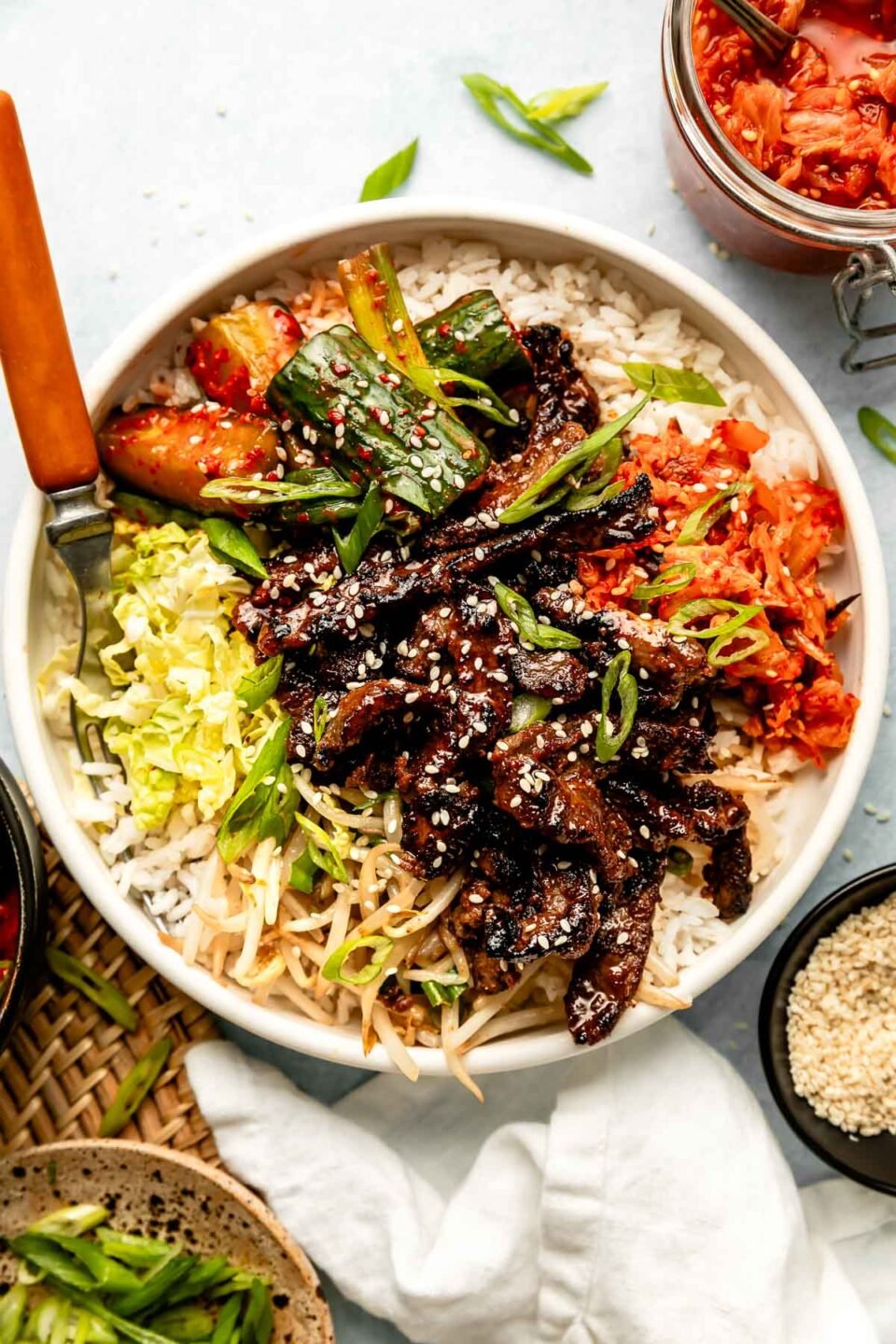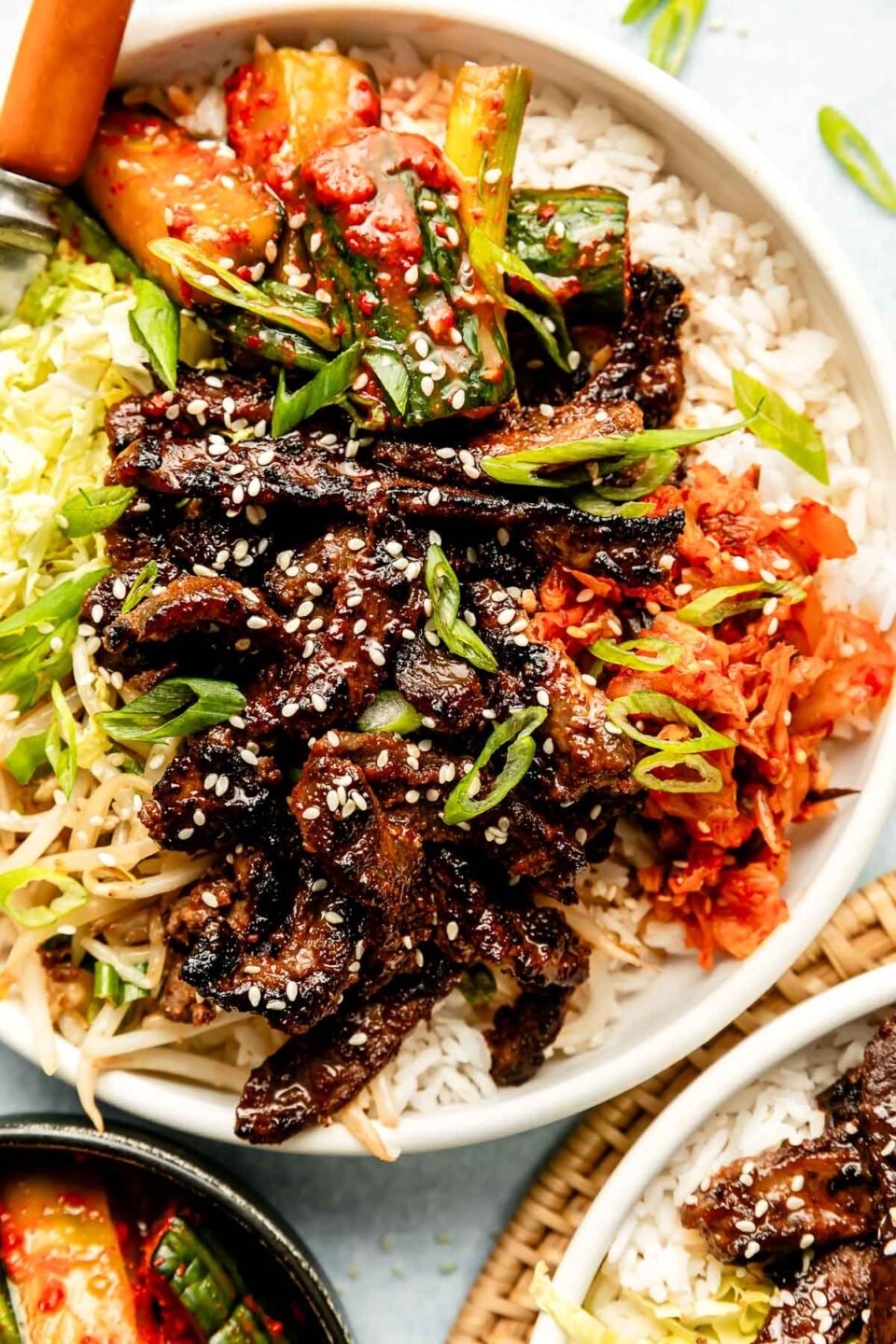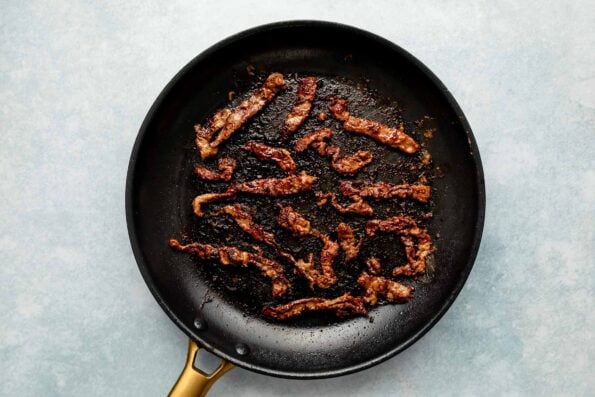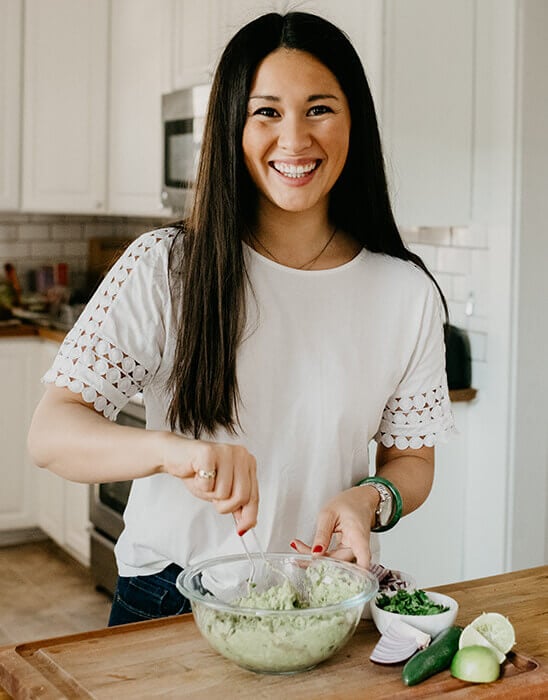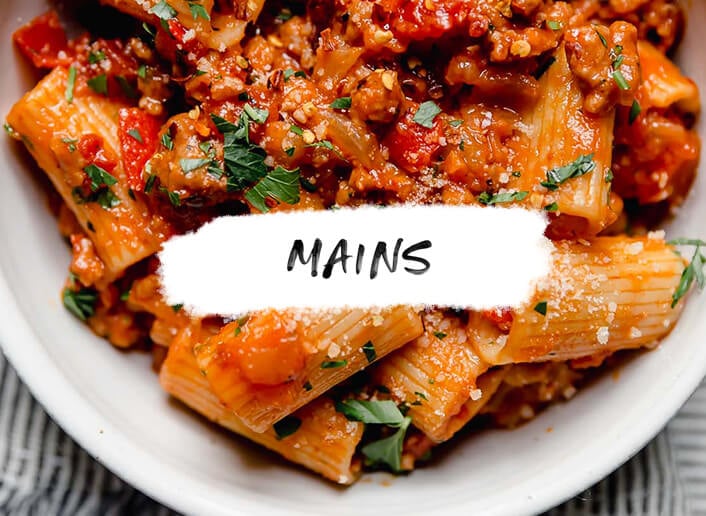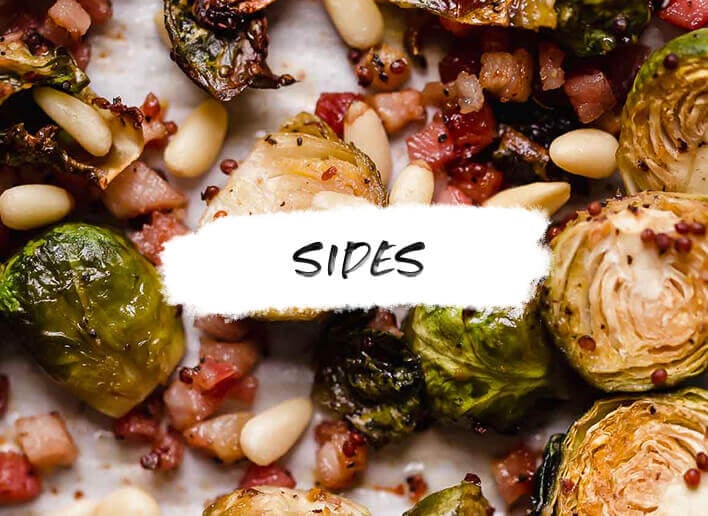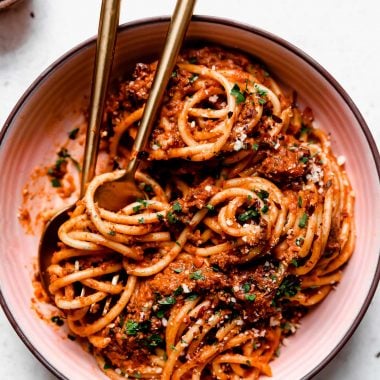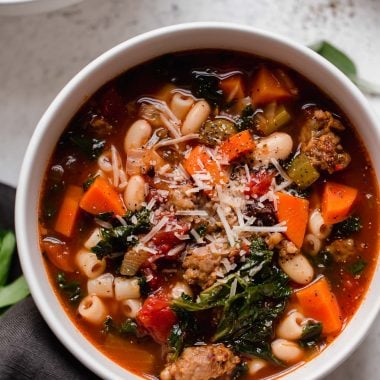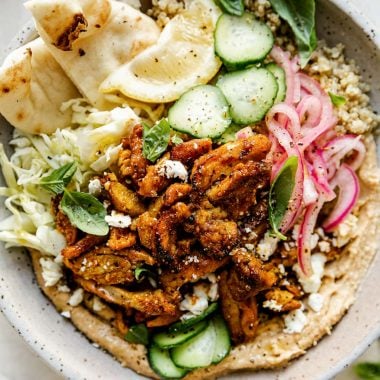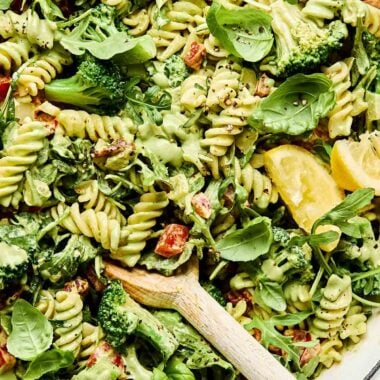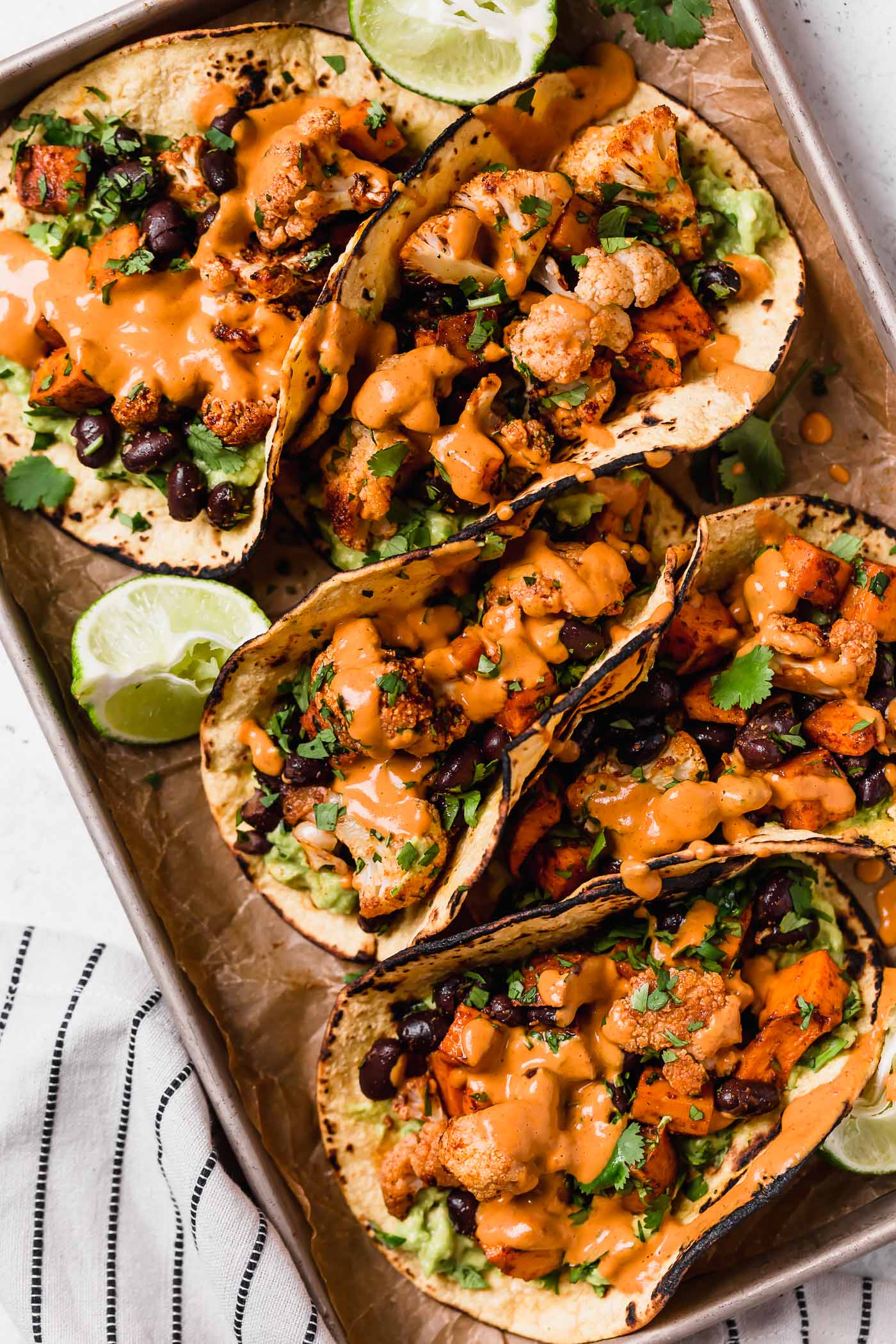THIS POST IS SPONSORED BY
Minnesota Beef! As a Minnesota-based food blogger, I am so proud to support the incredible cattle farmers and ranchers raising delicious local beef in my community. All thoughts & opinions are my own.
A Korean BBQ-Inspired Beef Bulgogi Rice Bowl, Made Easy at Home!
My mom loves Korean food – so whenever we travel back home to Hawaii, Korean BBQ is one of the things we indulge in the most.
There’s so much to love about KBBQ, and I think this Beef Bulgogi Bowl captures the best of it all.
This easy weeknight dinner bowl is loaded with Korean-inspired flavors and textures: light and sticky Calrose rice topped with tender, caramelized strips of bulgogi steak and banchan-inspired toppings like crispy mung bean sprouts and quick cucumber kimchi.
Everything there is to love about KBBQ, all layered into one satisfying bowl!
Shop This Post

Zwilling Enfinigy Power Blender – Black
Buy Now → Buy Now →
Buy Now → 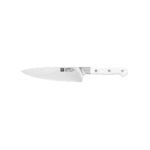 Buy Now →
Buy Now →  Buy Now →
Buy Now → 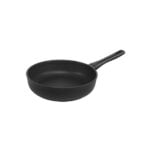
Zwilling Madura Plus Non-Stick Fry Pan
Buy Now → Buy Now →
Buy Now → 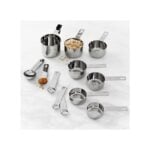
Stainless Steel Measuring Cups & Spoons
Buy Now →Steak Prep and Bulgogi Marinade
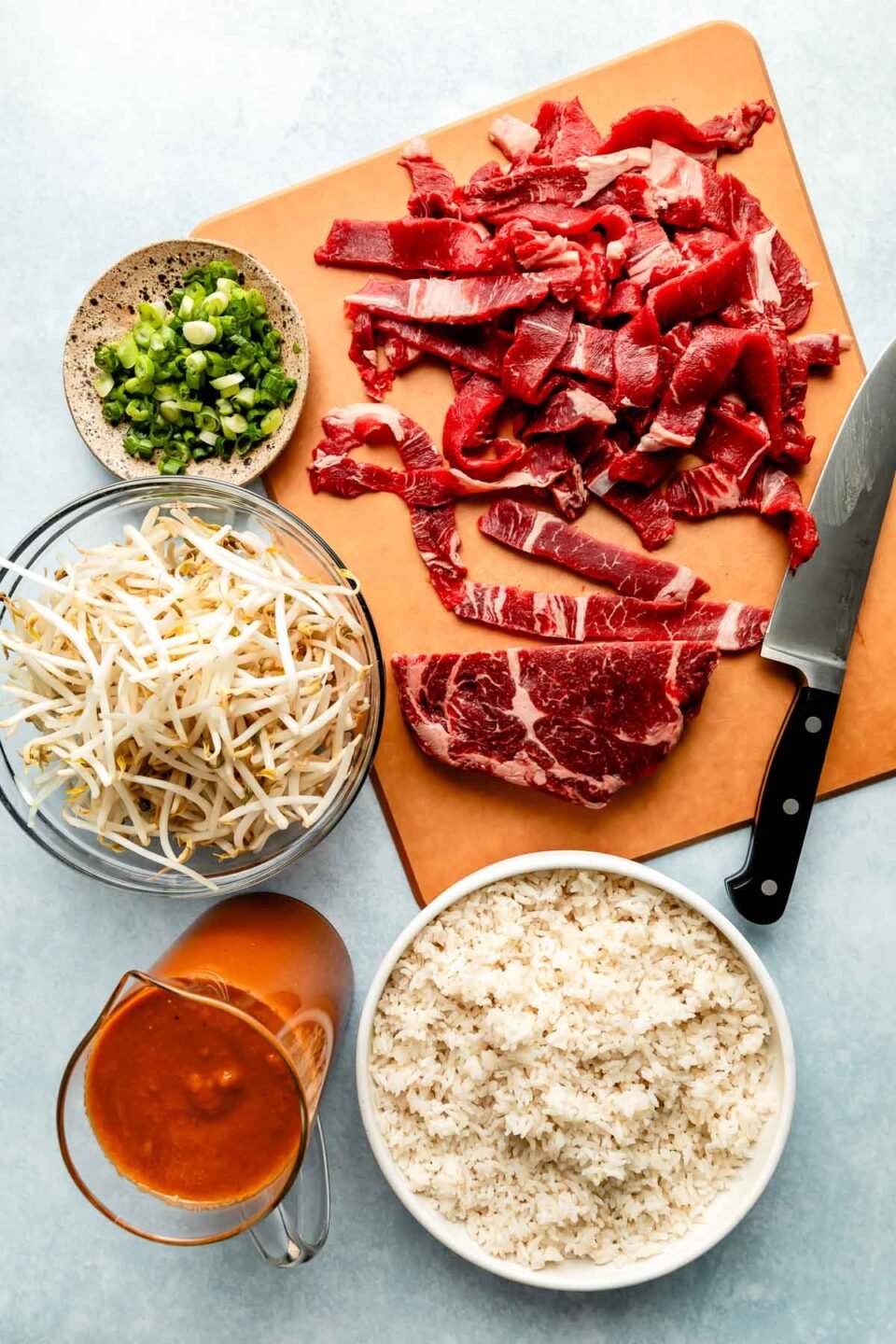
The best beef for this bulgogi bowl is a tender cut like ribeye or top sirloin. I prefer using ribeye (pictured) – its gorgeous marbling translates to BIG flavor. Sirloin also works great – it’s a slightly more budget-friendly cut that gives you the same juicy, tender results.
Thinly slicing is a must for beef bulgogi! Doing so serves a couple of purposes: it ensures the beef soaks up all of the flavor in the bulgogi marinade and helps the meat stay tender with a quick cook time. Tip! ⇢ Chill your beef in the freezer for 30 minutes and it will be much easier to slice into thin strips.
Sourcing Tip! ⇢ As a Minnesota-based food blogger, nothing makes me happier than supporting the cattle farmers in my backyard. I love making bulgogi using extra-flavorful Minnesota Beef. If you have the opportunity to support your local ranchers, please do so!


Go-To Bulgogi Marinade! ⇢ I inherited my bulgogi marinade recipe from my maternal Grandma Marian. Her recipe uses a handful staple Hawaii ingredients like shoyu, brown sugar, and Asian pear to create an aromatic marinade with balanced savory-sweet flavor. Korean flavors with Hawaii-style flare! 🌺🤙🏼
To prepare the bulgogi marinade, simply blend all the ingredients until smooth. Pour the mixture over the thinly sliced steak – easy! Be sure to marinate for at least 12 hours for maximum flavor in your beef bulgogi bowls.
How to Make Tender Caramelized Beef Bulgogi
IMHO, the most craveable aspect of bulgogi is the crispy caramelization created by cooking the meat on a KBBQ hot plate.
With a goal of recreating this KBBQ-style char at home (without turning on the grill), my mom and I tested a few different methods for this beef bulgogi bowl recipe.
Searing the steak on the stovetop and finishing it under the broiler yielded our favorite results. The quick, high-heat cook creates smoky-sweet flavor and crispy edges, all while keeping the beef super tender.


Sear the steak. Grab the bulgogi beef, shake off any excess marinade, and place the meat in a hot skillet on the stovetop. Cook about 1 minute per side, just until a golden-brown sear forms. Tip! ⇢ Sear the beef in batches if needed. Overcrowding the pan bogs it down with moisture, which steams the steak instead of searing it.
Broil the beef bulgogi. Transfer the seared steak to a baking sheet lined with tin foil and place it directly under the broiler. The sugars in the bulgogi marinade quickly caramelize under the high heat. Cook for 2-3 minutes and rotate the pan so everything gets an even char.
Learn More! ⇢ Mom’s Korean BBQ-Style Beef Bulgogi At Home.
Beef Bulgogi Bowl Assembly
Once the steak is perfectly caramelized and tender, all that’s left to do is layer it into a beef bulgogi rice bowl – easy!

At my house, bulgogi bowl night is not complete without a pile of sticky Calrose rice. It’s the perfect base since it soaks up all the savory-sweet bulgogi sauce.
And it wouldn’t be KBBQ without some banchan! These small Korean side dishes add an extra layer of texture and flavor to your bulgogi rice bowls. Add your favorite kimchi or try my mom’s Quick Cucumber Kimchi. Pickled radish, fresh napa cabbage, and sautéed greens are also fantastic. From there, a quick drizzle of spicy Gochujang Aioli is the perfect finishing touch!

I can’t wait for you to try this Beef Bulgogi Bowl! It has all the textures and flavors that my family loves about Korean BBQ, but is designed for home cooking. I think you’ll be surprised at how easy it is to make a Korean-inspired dinner any night of the week!
If you do give it a try, be sure to let us know! Leave a comment with a star rating below. You can also snap a photo and tag @playswellwithbutter on Instagram. We LOVE seeing your PWWB creations! ♡ Happy cooking!
Print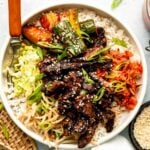
Caramelized Beef Bulgogi Bowl with Tender Steak & Rice
- Prep Time: 30 minutes
- Inactive Marinating Time: 12 hours
- Cook Time: 15 minutes
- Total Time: 12 hours 45 minutes
- Yield: serves 4
- Category: Entree Salads & Bowls, Main Dishes
- Method: Stovetop, Broiled
- Cuisine: Korean-inspired, American
Description
My family is fanatical about Korean BBQ. This Beef Bulgogi Bowl recipe is inspired by my favorite KBBQ experiences, layering all of the flavors and textures into a hearty rice bowl for an easy-yet-satisfying weeknight dinner.
You’ll start with my go-to beef bulgogi recipe, which yields tender strips of steak that are deeply caramelized and filled with punchy savory-sweet flavor.
The bulgogi beef cooks up in a matter of minutes, and from there you can layer it into a bowl with fluffy rice and your banchan (Korean side dishes) of choice – kimchi, crispy bean sprouts, fresh greens, and more.
Be sure to check out the blog post, above, for plenty more tips, tricks, and serving inspriation to get you started. ♡ Happy cooking!
Ingredients
- 2 pounds ribeye or tender steak of choice, thinly sliced against the grain into ⅛-inch strips (see Recipe Notes)
- Grandma Marian’s bulgogi marinade (below)
- 1–2 tablespoons vegetable oil of choice
- 8 ounces fresh mung bean sprouts
- 2 green onions, thinly sliced
- 3 cups cooked white rice
- for serving, as desired: leafy lettuce or finely shredded Napa cabbage, kimchi or pickled vegetables of choice (try Mom’s Quick Cucumber Kimchi), gochujang aioli, toasted sesame seeds, etc.
Grandma Marian’s bulgogi marinade:
- ½ cup shoyu (can substitute low-sodium soy sauce or tamari)
- ⅓ cup lightly packed dark brown sugar (can substitute light brown sugar)
- 2 tablespoons mirin or rice wine of choice
- 2 tablespoons toasted sesame oil
- 1 tablespoon gochujang
- 4 cloves garlic
- 1 small Asian pear, peeled, cored, and roughly chopped (can substitute Pink Lady apple or Bosc pear)
- 1 small yellow onion, peeled and roughly chopped
- 1-inch piece fresh ginger, peeled and roughly chopped
- kosher salt and ground black pepper, to season
Instructions
- Prepare the bulgogi marinade: To a blender or food processor, combine all listed bulgogi marinade ingredients (shoyu – ginger). Season with 1 teaspoon kosher salt and ground black pepper as desired. Blend or pulse to combine well. Learn more! ⇢ Grandma Marian’s Bulgogi Marinade.
- Marinate the steak: Place the thinly sliced steak in a large bowl or resealable plastic bag. Pour the prepared bulgogi marinade over top. Toss well to combine, using your hands to separate the steak and ensure each individual piece is well coated. Cover and marinate in the refrigerator for at least 12 hours or up to 3 days.
- Dinner prep: About 1 hour or 30 minutes before cooking, remove the marinated bulgogi beef from the refrigerator and allow to warm slightly. This is also a great time to cook a pot of rice and prep any other bowl toppings you like. Just before cooking, line a large baking sheet with aluminum foil for easy clean up and set aside. Preheat your oven’s broiler to its highest setting, ensuring a rack is positioned directly underneath it.
- Sear the bulgogi beef: Add 1 tablespoon of oil to a large skillet over medium-high heat. Once the oil is hot and shimmering, begin searing the beef in batches. I like to grab a small handful (allow any excess marinade to drip back into the bowl) and carefully place it into the skillet, spreading it into an even layer. Do not over-crowd the pan. Cook for 1 minute, then flip and cook for 30 seconds more. Transfer to the prepared baking sheet. Continue to sear the remaining bulgogi beef in batches, adding additional oil to the pan as needed. Discard any remaining marinade.
- Finish under the broiler: Once all of the beef is seared, transfer the sheet pan to the oven, placing it directly under the broiler. Broil 2-3 minutes, carefully rotating the pan halfway through, until the beef bulgogi is browned and slightly crisp. Remove from the oven and set aside for serving.
- Cook the mung beans: Meanwhile, as the bulgogi beef broils, quickly cook the mung beans. Return the skillet used to sear the beef to medium-high heat. Add the mung beans and green onions. Season with a good pinch of salt and ground black pepper as desired. Cook until just warmed through, using a wooden spoon to scrape up any of the flavorful browned bits from the bottom of the pan. Do not overcook; the crispy sprouts have wonderful texture!
- Assemble the beef bulgogi bowls and serve: Add the rice to a large, shallow bowl, then top it off with the bulgogi beef and any other banchan you love. At my house, we always build our bowls with finely shredded napa cabbage, kimchi or Mom’s Quick Cucumber Kimchi. If you’d like even more veggies, feel free to serve with roasted broccoli or asparagus. Enjoy!
Notes
Jess’ Tips and Tricks:
- Best cut of beef to use, plus prep tips: As written, this bulgogi recipe works best with tender steak. We love ribeye most, but top sirloin is also a great, slightly more affordable cut. Thinly slicing raw steak can be tricky. I suggest placing the steak in the freezer for about 30 minutes – 1 hour; the meat firms up quite a bit as it chills, making it much easier to slice.
- Gochujang is a fermented Korean chili paste made from red chili flakes (gochugaru), fermented soy beans, and glutinous rice. It has a distinctive spicy-sweet-funky umami flavor. Gochujang is readily available at Asian grocery stores (often packaged in a red plastic tub), though you can often find it in the “international” aisle of a conventional grocery stores or online. The brands I typically use are Chung Jung One and Mother-In-Law.
- Rice wine: You can find rice wine in the “international” aisle of most conventional grocery stores these days, though it’s also readily available at Asian grocery stores. Imperfect-yet-quick substitutes for mirin in this recipe include dry sherry or dry vermouth.
Storage and Reheating
Store leftover bulgogi beef in an airtight container in the refrigerator for up to 3 days. Reheat on the stovetop or in the microwave until warmed through, then serve as desired.

Recipe and Food Styling by Jess Larson, Plays Well With Butter | Photography by Rachel Cook, Half Acre House.
Follow along with Plays Well With Butter on Instagram, YouTube, Facebook, and Pinterest for more unfussy recipes that pack a big punch of flavor!


